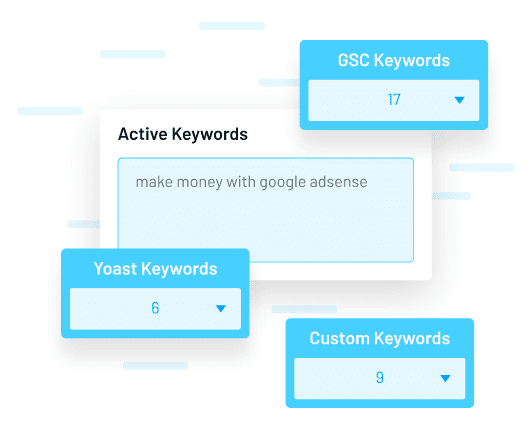In the ever-evolving world of digital marketing, content has become the lifeblood of brand visibility and audience engagement. But with the sheer volume of information available online, it’s easy to get lost in a sea of noise. The key to standing out lies in content mapping—a strategic approach that organizes your content around core themes, known as content pillars, ensuring consistency, relevance, and long-term value.
This guide will walk you through the process of identifying, organizing, and leveraging content pillars to build a sustainable and high-performing content strategy that aligns with your brand’s goals and resonates with your audience.
What Is Content Mapping and Why It Matters
Content mapping is the process of categorizing and structuring your content based on themes, buyer personas, and stages of the customer journey. Think of it as a library catalog: each piece of content is placed in a specific location so that it can be easily found, analyzed, and optimized.
For B2B marketers, content mapping is especially crucial because it helps align content with the complex decision-making processes of buyers. By understanding where your audience is in their journey (Discovery, Evaluation, Purchase, Loyalty), you can deliver the right message at the right time.
According to the 2024 Digital Marketing Barometer, 73% of B2B marketers now focus on creating fewer but more impactful pieces of content. This shift underscores the importance of quality over quantity—and content mapping ensures that every piece of content serves a purpose.
How Content Mapping Impacts SEO Performance
Content mapping isn’t just about organization—it’s a powerful tool for improving your SEO performance. Here’s how:
- Improved Keyword Targeting: By grouping content around specific themes, you can better identify and target relevant keywords, increasing your chances of ranking higher in search results.
- Enhanced User Experience: A well-structured content map makes it easier for users to find what they’re looking for, reducing bounce rates and increasing dwell time.
- Better Content Strategy: With a clear view of what content exists and where gaps may lie, you can create a more cohesive and effective content plan that supports your overall marketing goals.
Moreover, content mapping supports E-E-A-T (Experience, Expertise, Authoritativeness, Trustworthiness) by ensuring that your content is not only informative but also consistent and aligned with your brand’s voice.
Step-by-Step Implementation Framework
Creating an effective content mapping strategy requires a structured approach. Follow these steps to build a robust content pillar framework:
- Define or Audit the Current Situation
- Start by reviewing your existing content. Use tools like Google Analytics, SEMrush, or Ahrefs to assess which pieces are performing well and which are underperforming.
-
Identify gaps in your content coverage across different stages of the buyer’s journey.
-
Apply Tools, Methods, or Tactics
- Use a spreadsheet (Google Sheets, Excel, Airtable) to organize your content by theme, persona, and funnel stage.
- Incorporate keyword research to ensure each pillar has strong SEO potential.
-
Consider using tools like SurferSEO or Clearscope to analyze content structure and optimize for search engines.
-
Measure, Analyze, and Optimize
- Track metrics such as page views, click-through rates, and conversion rates.
- Regularly update your content map to reflect new insights and changes in audience behavior.
- Use A/B testing to determine which types of content resonate most with your audience.
Real or Hypothetical Case Study

Let’s take a hypothetical example of a SaaS company that sells project management software. Before implementing content mapping, they had a scattered content strategy with inconsistent messaging across channels.
After mapping their content pillars (e.g., “Project Management Best Practices,” “Team Collaboration Tools,” “Productivity Hacks”), they were able to:
- Increase organic traffic by 45% within six months.
- Improve lead generation by 30% through targeted email campaigns.
- Reduce content creation time by 25% by reusing and repurposing existing content.
By aligning their content with the buyer’s journey and focusing on high-value topics, the company saw a significant return on investment from their content strategy.
Tools and Techniques for Content Mapping
To streamline your content mapping efforts, consider using the following tools:
- Google Sheets / Excel – For basic content tracking and organization.
- Airtable – For more advanced data management and collaboration.
- Miro – For visual mind mapping and brainstorming sessions.
- Notion – For centralizing all your content planning and strategy.
- SurferSEO – For keyword clustering and semantic scoring.
- Ahrefs / SEMrush – For keyword research and competitor analysis.
These tools help you stay organized, track performance, and make data-driven decisions to refine your content strategy over time.
Future Trends and AI Implications
As AI continues to reshape the digital landscape, content mapping will become even more critical. With the rise of Semantic Search, Voice Search, and Multimodal Search, the need for well-structured, topic-focused content is greater than ever.
AI-powered tools like Google’s Search Generative Experience (SGE) and chatbots will rely heavily on content that is both accurate and contextually relevant. By building a strong foundation of content pillars, you’ll be better positioned to adapt to these changes and maintain a competitive edge.
One actionable tip for the future: invest in topic clusters rather than individual blog posts. This approach not only improves SEO but also enhances user experience by providing a comprehensive resource for your audience.
Key Takeaways
- Content mapping is essential for organizing and optimizing your content strategy.
- Content pillars serve as the foundation for your content, ensuring consistency and alignment with your brand’s goals.
- A well-structured content map improves SEO performance, user experience, and conversion rates.
- Use tools like Google Sheets, Airtable, and SurferSEO to streamline your mapping process.
- Stay ahead of AI trends by focusing on topic clusters and semantic content.
By mastering content mapping, you’ll not only improve your current content strategy but also set the stage for long-term success in the ever-changing digital world.
Meta Title: The Ultimate Guide to Mapping Your Content Pillars for Long-Term Success
Meta Description: Learn how to create a powerful content mapping strategy with this step-by-step guide to content pillars, SEO optimization, and long-term growth.
SEO Tags (5): content mapping, content pillars, SEO strategy, B2B marketing, content organization
Internal Link Suggestions: Parameter #12: Keyword Clustering for SEO, Parameter #8: E-E-A-T Optimization, Parameter #15: Lead Nurturing Strategies
External Source Suggestions:
– https://www.searchenginejournal.com
– https://backlinko.com
– https://ahrefs.com/blog






